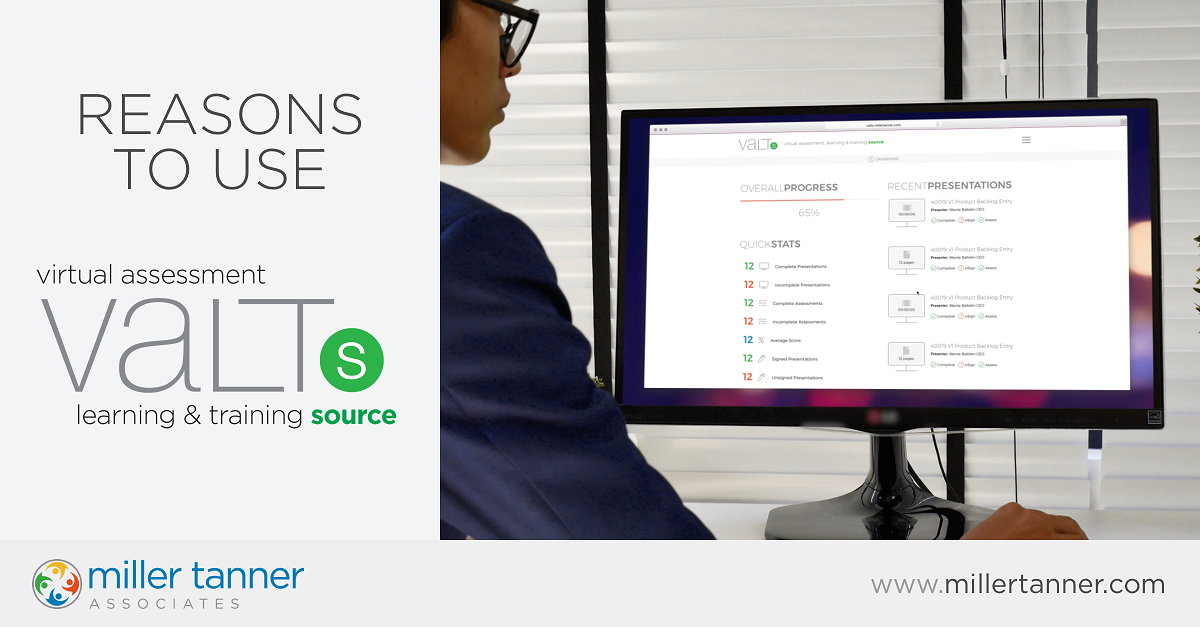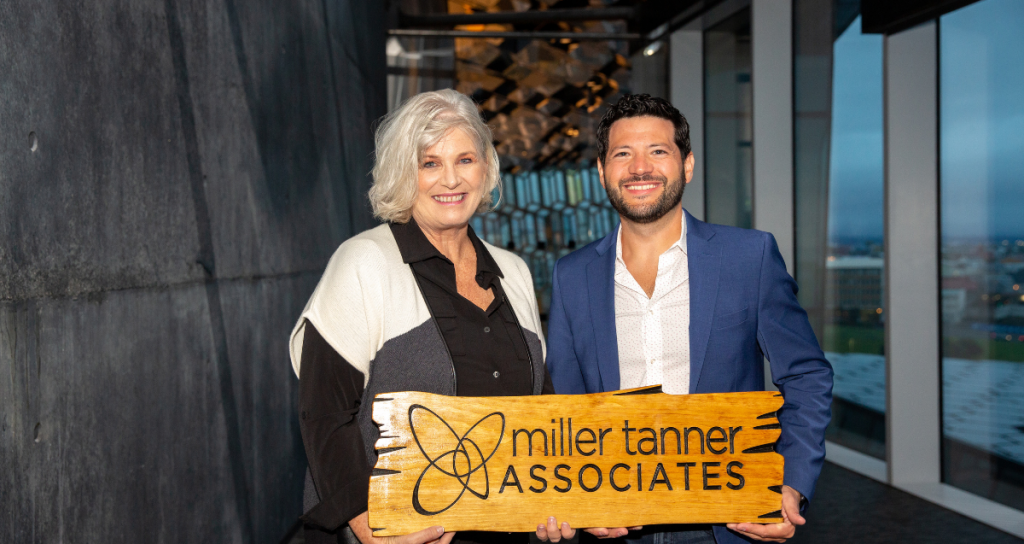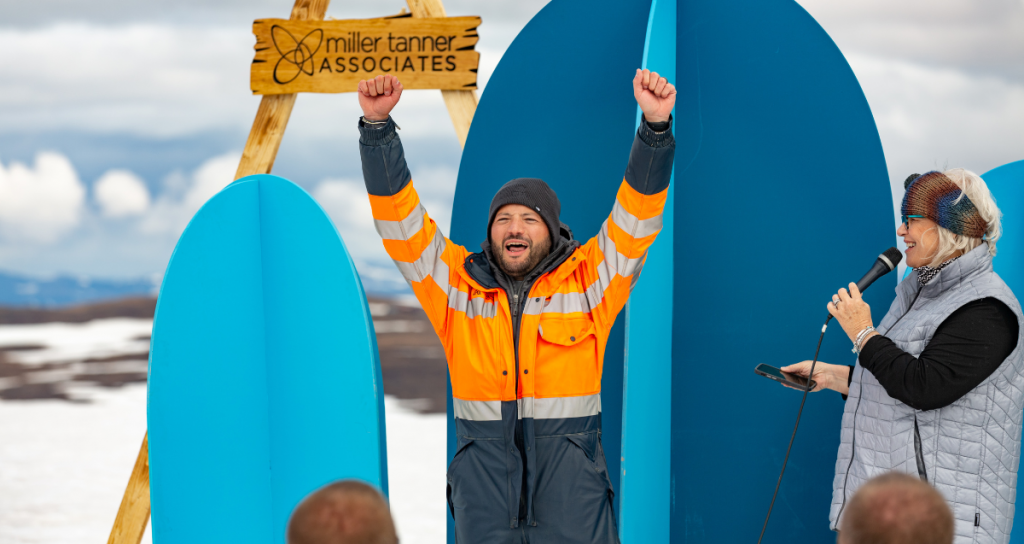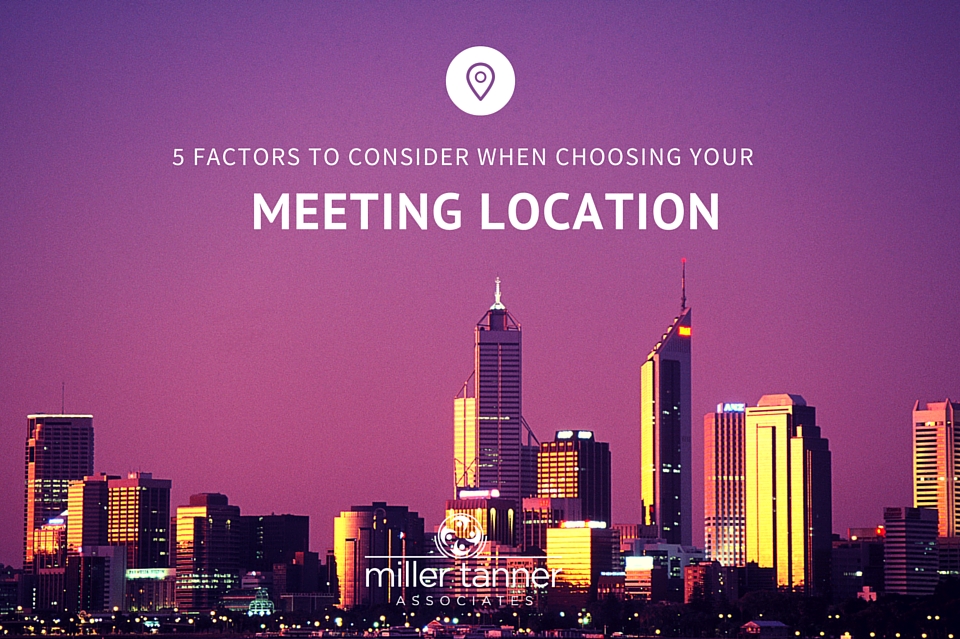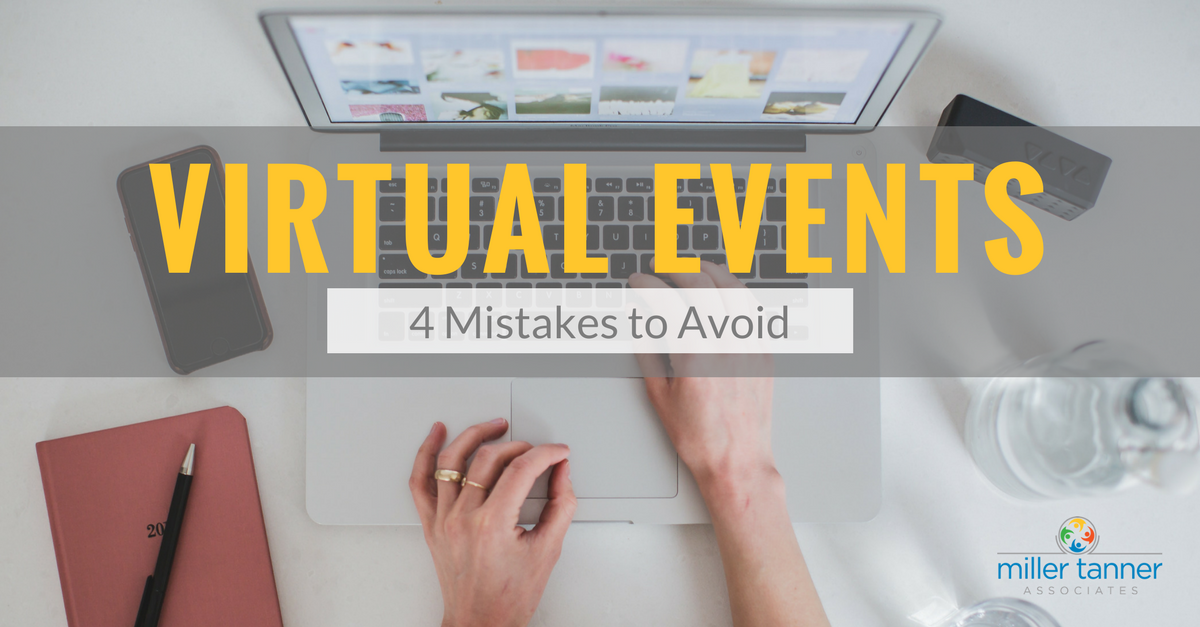How to Protect Your Digital Privacy
Computer viruses, cyber attacks, hackers…Are the unknowns, lurking around in cyberspace, keeping you up at night? By implementing these top 10 security tips from Daniel Conroy, Miller Tanner’s Director of Technology Services, you can rest assured that you are taking proactive measures to safeguard your data against security susceptibilities. Perhaps you’ll sleep better at night too.
10 Security Tips For Data Protection
1. Check For Software Updates
Software updates aren’t always new features. Many times, these updates are to correct a flaw in the software that could put you, and your data, at risk. It is also important to remember that once the software company releases a fix, they are also releasing the vulnerability. This doesn’t mean you have to be first to install every patch released, but it does pay to be timely.
Software companies haven’t quite made software updates mandatory yet, but they are a whole lot more automatic than they used to be. Google’s Chrome browser, for example, will automatically update the software and tell you when it is time to reboot. Microsoft’s Windows 10 has moved in the same direction. Even though more companies are moving to this model it never hurts to be sure. Checking for software updates for all your devices on a monthly basis is a good starting point.
2. Enable the Firewall
A firewall, as the name implies, creates a boundary between your computer and the Internet. This software doesn’t make your computer impervious to attack, but it’s certainly better than nothing at all. Both Windows and Mac OS X come with built-in firewall software. Make sure it’s enabled.
3. Use a Password Manager
Passwords are hard to remember and good passwords even more so. The fact is, unless you have an eidetic memory, remembering more than a few passwords is probably a challenge. This is why there are so many weak and reused passwords for accounts. Weak passwords are bad, but password reuse might be worse. How many of you use the same “good” password (you know the one with the letters, numbers, AND symbols) for multiple services say Gmail, Facebook, and Instagram. Imagine for a moment that Instagram suffers a breach and your account information is now compromised. They likely have your email address (which is probably the aforementioned Gmail account) and since you use the same password to access Gmail and Facebook, those accounts are now compromised too. Things just went from bad to worse.
But there is a better way.
Imagine having a different, complex password for each service you use. Not only is each password more complicated, in the scenario where Instagram was to suffer a breach, you only have to change one password. Interested? By using a password manager such as 1Password or LastPass you are only required to remember one good password and the software does the rest for you.
Speaking of ‘good’ passwords the key is entropy. XKCD.com is a fun and really great explanation of how all that works.
4. Encryption
Nowadays you can encrypt almost anything from your hard drive, your mobile phone and even your communications like email and text. To use encryption, follow this simple rule – when given the option to encrypt, do so.
5. Two-Factor Authentication
Two-factor authentication can be summed up by a simple tenet of something you have and something you know – like getting money at an ATM. You must HAVE your bank card and must KNOW your password. The point is you need more than just one factor (like a password) in order to access the service. Facebook, Gmail, and others offer this feature and you should enable whenever possible. It may make the login process a wee bit slower but the control it provides over your account is well worth it.
6. Bolster Browser Privacy
There is SO much information passed via your browser nowadays, it’s scary. Ever notice how you search for something on Google or Amazon and ads for that VERY same thing show up on other websites later? That level of tracking is just the tip of the iceberg. Do what you can to control your privacy and block those trackers with tools like PrivacyBadger or Ghostery. Looking to take things to the next level? Check out an internet search tool that doesn’t track you, DuckDuckGo.com
7. Malwarebytes
Today you need more than just standard antivirus software. The folks over at Malwarebytes make a solid protection that will help you clean all the little nasties that may be lurking on your PC or Mac.
8. Check App Permissions
If you’re like most people you’ve downloaded more apps on your phone than you actually use and very few of us actually remove apps we aren’t using. Not only are those dormant apps taking up space on your phone but they could be draining your battery too. Not to mention, some of them could be keeping tabs on your location. Do a routine sweep of what’s there and remove the junk!
9. Be Vigilant
Many times we can be our own worst enemies when it comes to data security and privacy. If a request for information doesn’t seem right, trust your gut! You can always call your bank and follow up on an email rather than provide the information requested in some emails.
And when it comes to social media think about what you’re posting and when. For example, is it better to tell everyone on Facebook that your house will be empty for the next two weeks or better to share what a great time you had once you’re safely back from your trip?
10. Use A Webcam Cover
These have become somewhat trendy over the past year with reports that hackers are gaining access to laptops and secretly turning them on to spy on the user. While these covers do little to protect your machine from outside attackers, they do, at least, give you control over when you’re on camera and when you aren’t. The bottom line is they can’t hurt and are easier to work with than tape.
Nothing is one hundred percent secure and even if it could be proven secure today that might change tomorrow; however, by following these 10 easy steps, you can certainly decrease your chances of security vulnerability.
We know that the security of your meeting data is of utmost importance to you. That’s why cybersecurity is a top priority for Miller Tanner at every event. Call us today to learn more about how we keep your information secure at every event.
Updated 10/27/2022
10 Signs You Need a Corporate Event Planner
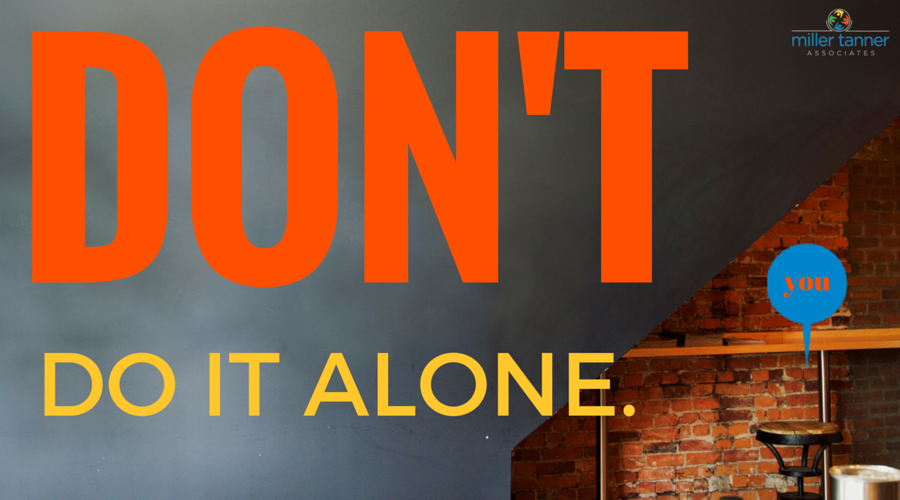
Planning a corporate event seems simple at first. You just book a hotel, arrange some travel and you’re all set, right?
Wrong.
Even though we’ve all attended meetings, running them in a flawless and professional manner is a completely different story.
The reality is that event planning can be challenging if unprepared. It demands time, focus, research, budgeting, logistical skills and relevant knowledge that many corporate leadership teams simply don’t possess.
Sadly, far too many companies try to figure it out on their own in order to save costs and their event becomes an epic disaster. Why you may ask? Simply put it’s not a core competency and nor should it be.
Before you plan your next event, such as a conference, make sure you have the proper negotiation skills and adequately trained resources in place to get the job done right. If you don’t have those skills and resources internally, it makes sense to hire a corporate event planner.
When to Hire a Corporate Event Planner: 10 Ways to Know
Wondering if you should hire a corporate event planner? Here are some top signs that it’s time to call in some help.
1. You don’t have the time upfront or resources internally.
Really, who does? You’ve got a job to do and planning an ad-hoc event is not part of that.
Events can take weeks or even months of lead-time planning. If you or someone at your organization doesn’t have time to handle all of the details, it makes sense to hire help.
2. You need to deliver an amazing experience and can’t risk failure.
If you don’t have event planning experience, you are not fully aware of how much must be accomplished in advance of your event date. It can be overwhelming!
Delivering a flawless event is always priority number one, so it makes sense to hire a partner that operates with the same level of excellence and professionalism -owning each and every detail to ensure a top-notch experience for your corporate and healthcare professional attendees.
3. You have never been to the locations being discussed.
Google can only tell you so much. On the ground knowledge of your event location will help guarantee the success of your event.
Without that, how can you be sure the hotel accommodations, meeting venues and entertainment options live up to the pictures online? Additionally many companies have guidelines in place that dictate hospitality depending upon the countries involved in the meeting.
Event planning specialists have a wealth of global knowledge at their disposal, and are focused on equipping you with unique, uncommon facts and proven, direct experience and opinions, so that you feel confident in making an informed decision about your final event location!
4. You are unfamiliar with legal and logistical requirements.
Traveling overseas can be tricky – especially when you are responsible for the safe arrival of your employees, clients, speakers and vendors.
You cannot afford to ignore the logistical challenges for group travel – including obtaining visas, having accurate participant documentation, reserving airlines, providing alternate transportation and finalizing lodging confirmation materials, etc. Having back-up plans in place will ensure your attendees arrive to the meeting hassle-free.
Don’t let these hurdles get in the way of your meeting’s success. Make sure you have someone on your team that is qualified and designated to handle all of the important minute logistic details which can have a major impact. Otherwise hire an expert.
5. You lack industry-specific event planning experience.
We work with a lot of clients in the healthcare and pharmaceutical industries. The events we plan for these clients require intensive knowledge about regulations as it relates to compliance, confidentiality and security.
If you’re not aware of the hospitality guidelines or country codes of conduct requirements needed for your industry, it pays to get help from an expert who does.
6. You lack the tools or technology.
Hypothetically, let’s assume that you need to virtually connect approximately 120 people who speak several different languages, hailing from 4 different time zones, with an event that’s happening in Singapore…
Okay, done! It’s simply that easy – at least it is for us at Miller Tanner. Because we have the tools, technology, and people to make it happen seamlessly.
But, if you don’t have those resources at your disposal, you definitely need to bring in help from someone who does.
7. You do not speak the native language.
Language can prove to be a big barrier in planning your event.
If you don’t speak the language of the country you’re visiting, you are likely to encounter logistical challenges with your event’s planning activities. Some hotel contracts only come in the local language for instance.
Having local contacts on the ground could not be more important, when considering the countless unknowns each new territory has to offer. Having a global partner is key to overcome language barriers wherever your meeting is taking place.
8. You cannot decide on a location.
The world is a big, beautiful place. With so many options, it can be overwhelming to choose the perfect location for your next event. It helps to know where the majority of your guests will be coming from.
Many times, we have found, that our client’s final deciding factor in choosing one destination over another potential location was something that they had not previously been aware of, or recognized as highly valuable. Understanding your meeting’s purpose, defining success upfront and being clear on your expectations is imperative to select the right location options from which to then narrow down.
An experienced global event planning company can help you choose a location that best meets the goals, needs and budget for your event.
This guide we created outlines some of the best global locations to consider in 2016 when planning an event. These cities offer value and premium options for your budget considerations.
9. You don’t have relationships with third party vendors.
You can certainly plan an event without a deep roster of vendor relationships. But your negotiation power will be limited.
However, when you have established relationships with hotels, airlines and other vendors, you can often better negotiate discounted group rates for your attendees. That’s what event planners bring to the table.
Not to mention, strong vendor relationships can help guarantee all the little details will be handled appropriately and timely. Vendor management alone can be a daunting and time-consuming task to ensure you’re getting the best service possible at a reasonable rate.
10. You are uncertain on how to define your event success.
A bullet without a focused target is simply a shot in the dark. It can be incredibly valuable to have a partner who can execute on your vision of success.
Some of the best services, which we are able to offer clients, involves the ability to use a completely organic, personalized approach on how to define and deliver success. We’re able to do that because we take the time to identify and understand company goals and stakeholders’ expectations.
The bottom line?
Yes, you can plan your own corporate event. But, if you find yourself questioning your knowledge, losing extensive time to this activity, or doubting your professional capabilities in any or all of the areas we have mentioned above, contact us. We can typically turn around a ballpark quote in under 24 hours.
Any meeting or event worth having is worth having it done right. And, MTA would love to help.
Updated 10/27/2022
MTA Excellence: 2021-22 Awards
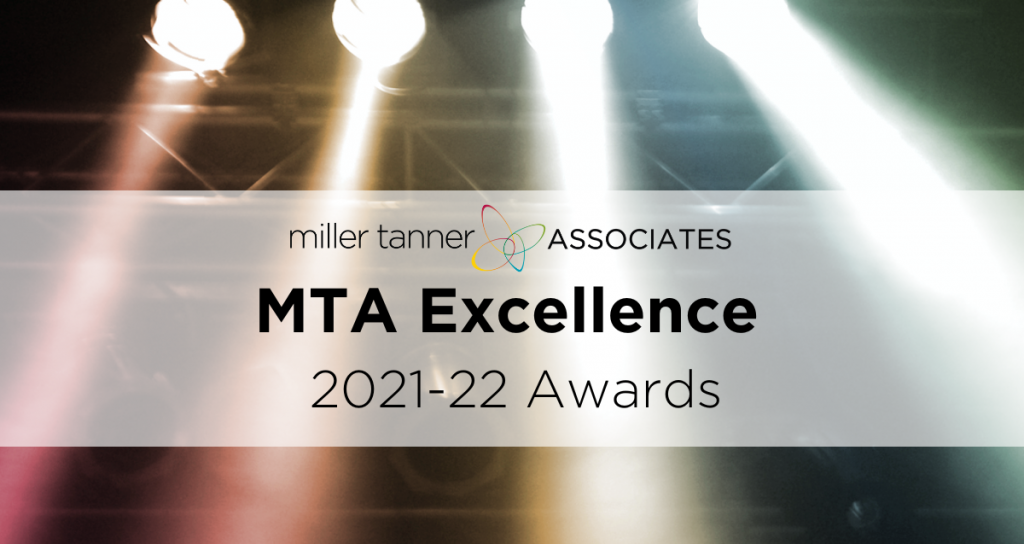
Miller Tanner Associates (MTA) is talent empowered. It’s what makes MTA such a special place to work – the collection of talent that believes in the same core values and comes together to create transformative event experiences for clients around the world. Our clients can find a personality they can connect with and the MTA Team crafts events that connect to all people, pronouns, and ranges of accessibility.
“At MTA we try to celebrate each other every day,” shares Marnie Battistini, CEO, “but over time we realized that each year there are those of us that shine brighter and that bright beam of light should be celebrated in a more robust format.”
Each year we recognize our award recipients at our annual Workshop held in July. Our five award categories are Story of the Year, Gift of Service, MTA Saver, Theme of the Year, and the Marnie Award.
Congratulations to our MTA 2021-22 Award Recipients
Story of the Year Award – Jesse Torres, Senior Software Engineer
“So much of what the Technology Services Team does is behind the scene but when we look at the body of work that Jesse and team have undertaken in the past year – it reflects the care, ingenuity and attention to detail that Jesse brings to the team. Jesse’s work has set the foundation for our next chapter and we’re excited for the work to come.” Read more…
Gift of Service Award – Taylor Tomlinson, Proposal Manager
“Taylor has been such a steady and strong force for our team over the past year – she has shown tremendous focus and dedication while living our core values, even when facing adversity.” Read more…
Gift of Service Award – Diana Reed, Key Account Director
“I have always been struck by her [Diana] deep devotion to taking care of her customers. She is such a customer advocate, always making sure our customers’ event goals are clearly communicated internally for the MTA Global Experiences Team to execute successfully.” Read more…
MTA Saver Award – Christina Serra, MPA, Director, Global Experiences
“Christina has a mind and heart like no other. Always centering the team in her day to ensure they are successful before accomplishing her own goals. She is a shining example of transparent leadership, leading with clarity and kindness at the same time.” Read more…
Theme of the Year Award – Bart Alazio, Senior Global Experience Manager, Production
“Bart is a master at translating complex production elements and concepts into ideas and words that our clients can understand. He continually meets the new needs of the ever-changing landscape for event production, revolutionizing our service offerings and processes as he goes. Never has production been more important for events and we are grateful everyday to have Bart’s voice leading our team.” Read more…
Marnie Award – Jill Mason, Controller
“Jill is a unique talent and such a team player. She brings immense value to MTA and leads by example. Her knowledge of the operational aspects of MTA and each of our customers in addition to her technology utilization are exceptional. Jill also supports everyone at MTA and is extraordinarily responsive. So excited that Jill won the Marnie Award.” Read more…
Congratulations to these distinguished associates recognized for their excellence and achievements at Miller Tanner Associates!
Meet MTA: Bart Alazio, Senior Global Experience Manager, Production
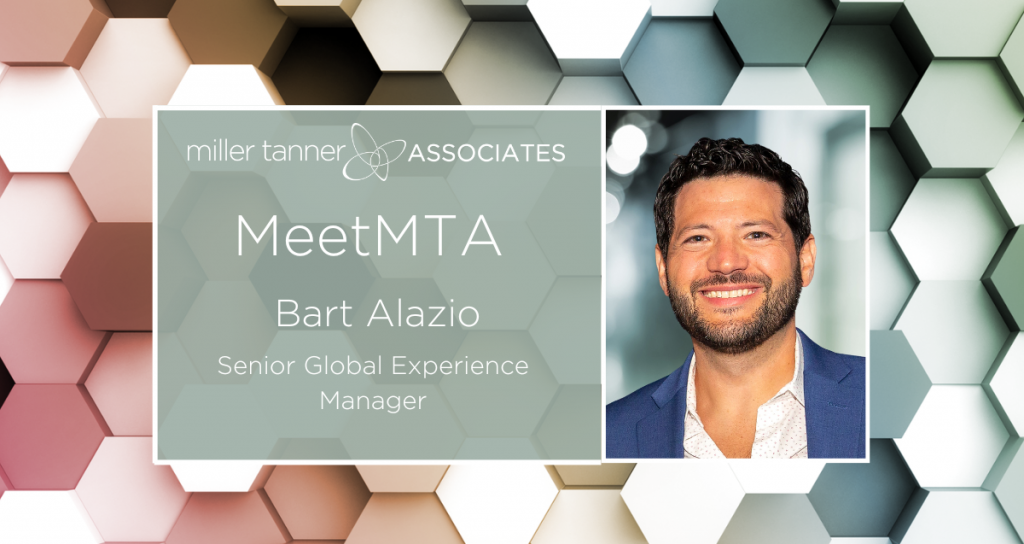
The Miller Tanner Associates’ (MTA) difference is our people. That’s why we want to introduce you to our team of superstars that brings our corporate meetings and events to life for our clients. Today we introduce you to Senior Global Experience Manager – Production, Bart Alazio. With over 14 years as a production industry entrepreneur, Bart now leads the MTA production team bringing next level innovation to our clients through technology and creative production services.
He is also our ’21 Theme of the Year Award recipient.
Meet Bart Alazio
Tell us about your current role with MTA? What are your primary responsibilities?
As a senior global experience manager for production, I have the privilege of leading our supremely talented team of global production managers. Along with managing and growing the team, I develop and implement MTA’s strategy for all things production including emerging event technology.
How long have you been with MTA? I just celebrated my 1st year with MTA!
Is your background in media production? What did you do before MTA?
I’m not exaggerating when I say I’ve been in production my entire life. As a little kid, I would help my father develop and mount 35mm film for carousel slide trays. I built my first PowerPoint deck for an investigator meeting when I was 12. The past 14 years before joining MTA, I ran my own production company that specialized in clinical and commercial events for life science clients.
You are currently based in New Jersey? What do you enjoy most about where you live?
Born, raised, and still reside in northern NJ. I love the easy accessibility to NYC while maintaining the tranquility suburban life provides. There is always something new to do in NYC, but one of my favorites is Saturday morning brunch on Stone Street in lower Manhattan, outside tables on a cobble stone street quietly tucked in among the chaos. After brunch you can grab a coffee, walk to Battery Park and people watch.
What do you enjoy most/favorite aspect of your job?
I’m a forward-thinking person; I enjoy being in the forefront of event technology. Contextualizing potential services and equipment then integrating it in a meaningful way for today’s events for MTA clients is one aspect I enjoy.
What interests do you have outside of your professional pursuits?
I love coaching youth sports. It’s sports at its purist form. Because I have a travel-based career, it’s a way I can prioritize my quality time with my two young kids.
What’s been your most favorite location for a meeting and why?
Scottsdale, Arizona. The amount of quality event properties is unparalleled, and I’ve never had to use backup space for an outdoor event due to weather.
What makes Miller Tanner Associates stand out as meeting planning company, in your opinion?
MTA cultivates an internal environment that stimulates innovation. Team members are encouraged to explore ideas and solutions outside the box. This culture is not only instrumental in the constant evolution of proprietary products like EPIC, Attend and VALTs but the smaller everyday solutions and expansion of our services. This allows MTA to produce events and products that elevate client experience beyond a standard meeting planning company.
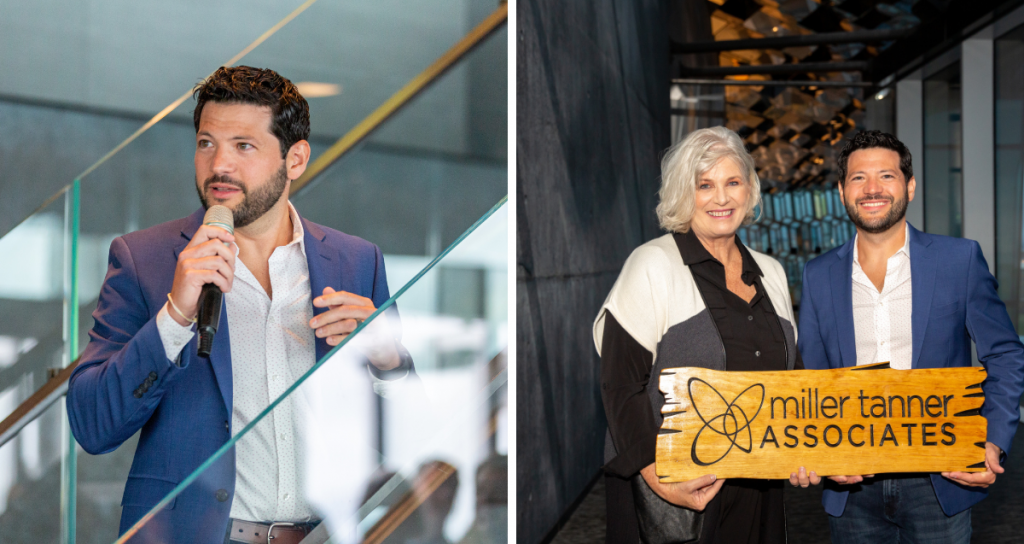
What’s your best advice that you would give to a client when it comes to planning their media needs?
No matter the size of the event, your “message”, whether educational or inspirational is the core that all production elements need to be built around. Production provides tools to deliver, enhance and reinforce the message, but can easily overshadow the event when underestimated or more commonly misused. Production is foundational to your storytelling, the visual, audio, and engagement aspects are key to optimizing retention of your message post event.
Any trends in media production that you are noticing?
For over a decade, the most highly debated topic among production professionals and clients has been – What is the cost vs. value of hybrid events? The pandemic has forced stakeholders to assess that the true cost of not having a virtual component to a face-to-face event is isolating a large portion of potential attendees. When stakeholders shift their perception of a hybrid’s core function to one of accessibility and inclusion, the advantage of a hybrid becomes transparent. Hybrid events need a carefully curated strategy to create an equitable experience that is considerate of the participants’ time and commitment, no matter the attendees’ pathway.
Since you travel a lot for your position, tell us some of your best travel tips.
Be nice and smile. Nobody enjoys being in an airport, but we’re all in it together – from the gate agents to flight attendants and even fellow passengers. Kindness goes a long way, and it might even get you out of a middle seat on a long-haul flight home.
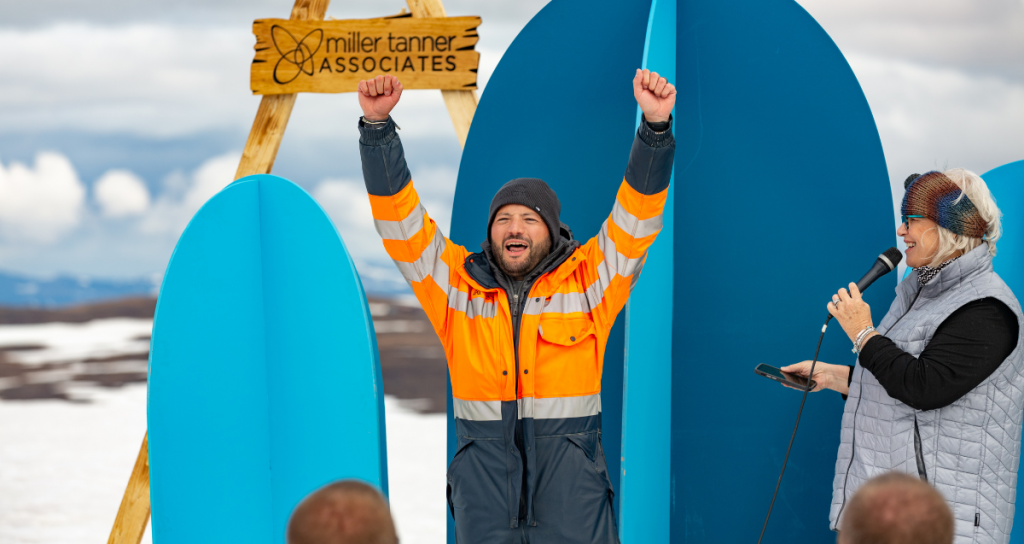
Why do you think that the MTA Workshops are important? What do you get most from this time together?
As a global and remote company, it’s our time to unplug from devices and connect on a human level. It’s also an amazing opportunity to flip the switch from planner to attendee and gain valuable insight from a different perspective.
Visit www.millertanner.com to learn more about MTA or follow us on Instagram for behind-the-scenes with our team members.
MTA ’21 Marnie Award

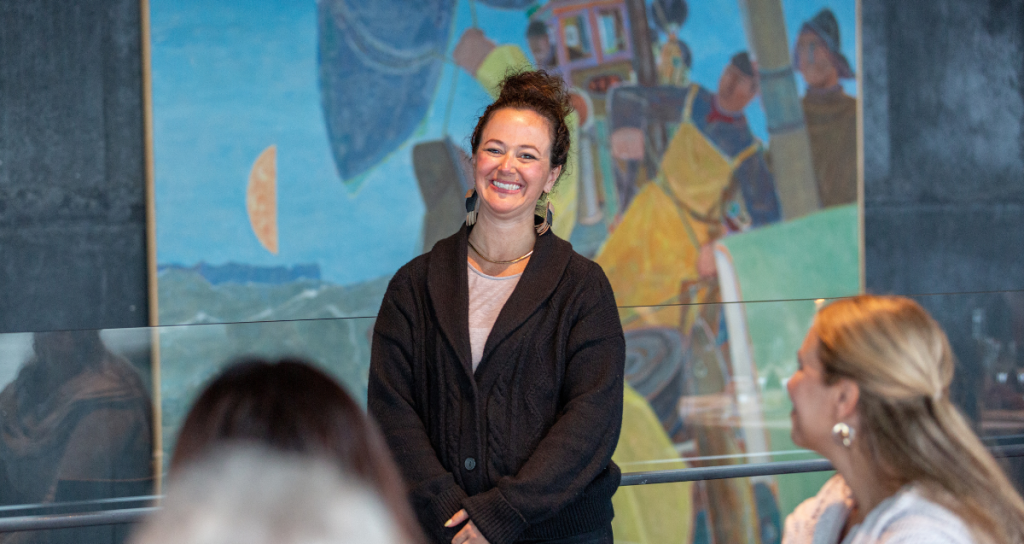
Miller Tanner Associates (MTA) is talent empowered. It’s what makes MTA such a special place to work – the collection of talent that believes in the same core values and comes together to create transformative event experiences for clients around the world. Our clients can find a personality they can connect with and the MTA Team crafts events that connect to all people, pronouns, and ranges of accessibility.
“At MTA we try to celebrate each other every day,” shares Marnie Battistini, CEO, “but over time we realized that each year there are those of us that shine brighter and that bright beam of light should be celebrated in a more robust format.”
Annually at our MTA Workshop, we hold an awards ceremony. We experiment with different ways to design a memorable awards show and this year was no different. To recognize our 2021 award winners, MTA held the awards show on a Glacier in Iceland – an MTA first to build a stage out of snow, insert a locally built custom stage set, and gather the team together on a glacier to praise and celebrate this year’s winners.
Our five award categories are Story of the Year, Gift of Service, MTA Saver, Theme of the Year, and the Marnie Award.
And the 2021 Marnie Award goes to…
Jill Mason, MTA Controller
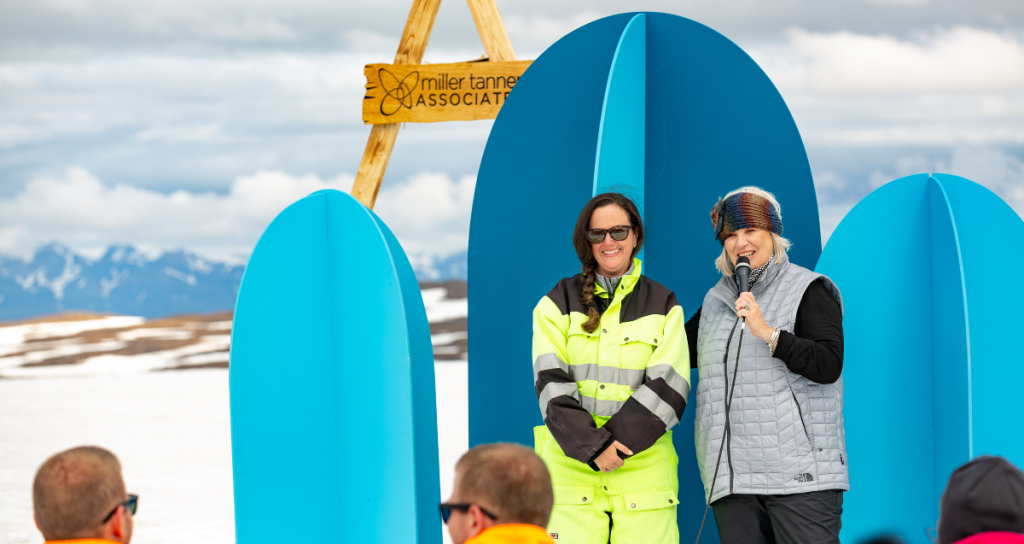
The Marnie Award is given by the MTA CEO to the associate/s that she believes has done the most for MTA during the year. The Marnie Award recipient embodies the best of what MTA values and exemplifies. It’s a personal award seen from the CEO’s vantage point.
At the awards ceremony on the glacier, Marnie spoke about Jill’s impact at MTA. Here’s a small list of the topics Marnie shared about Jill:
- Completed MTA’s profitability improvement sprint
- Improved MTA’s invoicing process
- Overhauled MTA’s contracting process
- Improved the connection between MTA’s systems
- Implemented processes for improved cash management and visibility
- Enhanced financial reporting and analysis with greater visibility
- Onboarded three finance team members
- Demonstrated strong department leadership
- In collaboration with MTA proposal manager, improved efficiency of MTA proposals process
MTA CEO Marnie Battistini added, “The ‘Marnie Award’ may not be the best name for an award, but it does represent my choice of who has shined the brightest at MTA during any given year. This year the shining star is Jill Mason. Jill’s number one strength is responsibility. I’m constantly aware I need to protect Jill from taking on too much work as her ownership for anything she commits to, whether large or small, means she will follow it through to completion. Jill’s work ethic, conscientiousness, and near obsession for doing things right, make Jill utterly dependable. An amazing talent, with her mad Excel skills and her kind nature, have made working with Jill such a joy. MTA has benefited greatly from Jill’s investment of talent at work and I am very appreciative of all she brings to the MTA global team.”
MTA’s Chief Financial Officer Marilyn Eisele said this about why Jill deserved the 2021 Marnie Award: “Jill is a unique talent and such a team player. She brings immense value to MTA and leads by example. Her knowledge of the operational aspects of MTA and each of our customers in addition to her technology utilization are exceptional. Jill also supports everyone at MTA and is extraordinarily responsive. So excited that Jill won the Marnie Award.”
Congratulations, Jill! You are an MTA Bright Light!
MTA Theme of the Year Award

Miller Tanner Associates (MTA) is talent empowered. It’s what makes MTA such a special place to work – the collection of talent that believes in the same core values and comes together to create transformative event experiences for clients around the world. Our clients can find a personality they can connect with and the MTA Team crafts events that connect to all people, pronouns, and ranges of accessibility.
“At MTA we try to celebrate each other every day,” shares Marnie Battistini, CEO, “but over time we realized that each year there are those of us that shine brighter and that bright beam of light should be celebrated in a more robust format.”
Annually at our MTA Workshop, we hold an awards ceremony. We experiment with different ways to design a memorable awards show and this year was no different. To recognize our 2021 award winners, MTA held the awards show on a Glacier in Iceland – an MTA first to build a stage out of snow, insert a locally built custom stage set, and gather the team together on a glacier to praise and celebrate this year’s winners.
Our five award categories are Story of the Year, Gift of Service, MTA Saver, Theme of the Year, and the Marnie Award.
And the 2021 Theme of the Year Award goes to…
Bart Alazio, Senior Global Experience Manager, Production
Each year MTA creates a theme for the year. Usually, it’s a word and sometimes it’s a statement that will describe that year’s emphasis. MTA’s 2021 theme was around “Revolution” which we defined in this way – “a dramatic and wide-reaching change in the way something works or is organized or in people’s ideas about it.”
MTA’s Strategic Leadership Team (SLT) focused on the words “dramatic/wide-reaching change” and then connected those words in the way “something works/or is organized/or in people’s ideas” to see how REVOLUTION was realized at MTA in 2021.
The clear winner was Senior Global Experience Manager Bart Alazio who has been working hard to shift the way MTA operates, budgets and approaches vendor partnerships within our expertise.
Bart spent a large portion of the fall of 2021 transforming MTA’s previous approach to production budgeting and pricing by introducing a more efficient and strategic approach to proposal budgeting, operational functions, and financial accounting.
In addition, Bart is continually creating new packages and offerings for MTA’s customers. With Bart’s leadership MTA is deepening the understanding and connectivity of events and production to create a better internal and external experience. Bart has taken big strides to bridge that gap in both education for the MTA global team and for our customers’ global team – first in creating a master class series about production to help teach the ins and outs of our team’s expertise in creating an event and secondly, in adding production education to MTA’s onboarding process.
MTA CEO Marnie Battistini added, “I knew Bart had the gift of service the first day I met him in person. It just so happened to be his first day on the job having joined MTA just in time to attend one of our annual events. I expected Bart to have exceptional production knowledge as MTA’s production lead, but what struck me so immediately was his awareness level. He naturally absorbed the audiovisual set up and quickly offered some audio tweaks that greatly impacted the audiences’ experiences – both the virtual audience and the face-to-face audience. His quiet strength of purpose was not only appreciated by me as the presenter, but indirectly by the audience who never knew anything differently. I really admire Bart’s ability to see what is needed to be done and always does it in the most professional way possible. He’s the best!”
MTA’s Chief Experience Officer Meredith Shottes said this about why Bart deserved the 2021 Theme of the Year Award: “Bart is a master at translating complex production elements and concepts into ideas and words that our clients can understand. He continually meets the new needs of the ever-changing landscape for event production, revolutionizing our service offerings and processes as he goes. Never has production been more important for events and we are grateful everyday to have Bart’s voice leading our team.”
Congratulations, BART! You are an MTA Bright Light!
Meet MTA: Jon Shipman, Senior Software Engineer

The Miller Tanner Associates’ (MTA) difference is our people. That’s why we want to introduce you to our team of superstars that brings our corporate meetings and events to life for our clients. Today we introduce you to Senior Software Engineer Jon Shipman our Kansas-based associate working behind the scenes of MTA’s Technology Services Team to ensure our proprietary event technology tools offer an agile, optimal solution for our customers and our team.
Meet Senior Software Engineer Jon Shipman
Tell us about your current role with MTA? What are your primary responsibilities?
I’m a software developer. I create new features and fix issues for applications such as EPIC, VALTs and Attend.
How long have you been with MTA? I have been with MTA for 1 year and 7 months.
What did you do before joining MTA?
I worked for a home builder in Houston, Texas for about 7 years. Prior to that I worked at NASA for about 13 years where I developed software for use in NASA’s Mission Control Center and on board the Space Shuttle and International Space Station. Also, during shuttle missions, I worked as an OCA (Orbiter Communications Adapter) Officer. In that position, I interacted with the network of laptops onboard the shuttles.

What do you enjoy most about your job as a software engineer? I enjoy fixing things and making folks’ lives easier.
Where do you live and what do you love most about your state/city?
I live in the middle of nowhere in rural Kansas. I love the peace and quiet, and nature. In my part of Kansas there are lots of hills and trees. It’s really beautiful.
What do you do for fun? I’m always building things and improving the landscape around my property.
What makes MTA stand out as meeting planning company?
I work with an outstanding group of folks. Miller Tanner Associates stresses work/life balance and they really back that up. It’s a great place to work.
What are some of your favorite tech trends?
I like that everything is trending “lighter.” MTA is trending toward mobile-friendly and less data-heavy interfaces for our users. This will not only make using our applications more flexible, but by making them lighter they’ll be easier to use and perform better as well.
Why do you think that the MTA Workshops are important? What do you get most from this time together?
In general, you can imagine that tech folks tend to lean towards being introverts. It’s good to get us out of our shell every so often! It’s also great to meet and see our teammates in person. We communicate and deliver really well working remotely, but if we get to spend a little time with our coworkers in person, it really enhances our communication when working with them online.
Visit www.millertanner.com to learn more about MTA or follow us on Instagram for behind-the-scenes with our team members.
How to Choose a Meeting Location – 5 Factors to Consider
You have a meeting and participants who are willing to travel, but with so many destinations, where will you choose?
One of the very first steps in planning your meeting is determining the ideal location. With so many choices – from Paris to Dallas to Seoul – how do you narrow down your options to determine the city and country that will be the best fit?
Ultimately, your budget and the general locale of your attendees can tell you a lot about where and how to move forward in finding the best fit for your meeting location.
Consider these 5 factors that we’ve compiled to help you decide where to host your next corporate meeting:
1). Convenience / Proximity to Attendees (distance, time, direct flights, etc.)
Steer clear of long travel times and flight changes that can be a major deterrent for your attendees. Instead, select meeting locations that are time efficient for travel. This will keep costs down for you while keeping your meeting attendees “happy travelers”.
Miller Tanner can offer multiple meeting city options for your meetings. Together we can compare prices and availability of your preferred dates while considering proximity and travel convenience.
2). Price / Cost Effectiveness
Having planned thousands of global meetings, we can offer several options to consider while keeping your meeting cost-effective and within budget.
Within a week of our initial contact, we provide you with an assortment of hotel options and quotes, so that you can compare all expenses involved, including travel, ground transportation, hotel costs, meal prices, and taxes, for various meeting locations, cities, and hotels.
3). Safety
Safety is as much of a top priority for you as it is for us. Though emergencies are rare, the unexpected can happen. It’s good to have a thorough safety plan in place should such a situation arise.
Identifying what safety measures will be taken into account, both at a city and country-level as well as within the actual meeting venue itself is an important factor to consider when choosing your location.
It’s good to know upfront the safety plans of the hotels that you are considering in case of an emergency. You’ll want to make sure that those hotels can provide extra hands on deck and will work with you should a circumstance arise for your event or your attendees.
As meeting planners, we monitor travel warnings, threats, and medical outbreaks that could potentially put your meeting and its attendees in jeopardy. Should your meeting be faced with an emergency, we can help find a solution to keep your meeting on track.
4). Meeting Guidelines
Oftentimes, your meeting has set parameters that you’ll need to workaround. As meeting planners, we take these guidelines into considerations to find a location and venue that meet all of your meeting requirements. MTA has a roster of hotels from which to choose so we can select a location and venue that falls within your meeting’s established guidelines.
5). Attractiveness
Last and certainly not least, another factor to consider when targeting your location is choosing a city that is attractive to the attendees. If culture or off-site touring is an important aspect of your meeting, you’ll want to decide on a location that provides a memorable experience for your attendees while also staying within your guidelines. It’s always an added bonus to consider a city that will draw interest from your invitees.
Need the inside scoop on our top international event recommendations? Check out our location guide based on culture, location, budget and more.
Also, check out these additional resources to help you find the right fit for your next meeting location.
- Cvent evaluated over 5,000 cities. Here’s their list of the top 50 destinations of 2015. Click here for more info.
- Smart Meetings published their top 15 great meeting cities. Click here for more info.
Ultimately, the goal is to find a meeting location that is not only memorable but also safe, convenient, and cost-effective while staying within the parameters of your company’s guidelines. If Miller Tanner can assist you in determining the perfect location for your next event, we’d love to help you make that happen.
Frequently Asked Questions
In effort to help readers to summarize the information found within this post, we’ve recapitulated the article in question and answer form.
How Does Proximity to Attendees Affect an Event’s Success?
Avoid lengthy travel times and airplane changes, if possible, which may be a big turnoff for your guests. Instead, choose a meeting place that will save you time on the road (or the air). This will save you and guests money while also boosting your conference participant attendance numbers.
How Do Professional Event Planners Help With Costs?
Expert event coordinators can offer a variety of hotel and vendor choices with cost estimates within days of contacting them. This means you can evaluate all expenditures, including travel, ground transportation, hotel rates, food pricing, and taxes, for different meeting sites, towns, and hotels sooner, rather than later.
What Sort of Safety Precautions Should Be Considered When Event Planning?
Even though crises are uncommon, they may occur. It’s a good idea to have a comprehensive safety plan in place in case anything like this happens. Identifying what safety precautions will be taken into consideration, both at a city- and national-level as well as inside the meeting site itself, is an essential aspect to consider when deciding where to have your conference.
What Sort of Meeting Guidelines Should My Corporate Event Have?
Often, your meeting will have a predetermined schedule that you’ll have to work around. When planning your event, consider these criteria while looking for a location and venue that will suit all of your needs. Event planning specialists offer a list of hotels from which to pick, allowing you to choose a location and venue that meets your meeting’s requirements.
Does the City My Corporate Event is Held in Matter?
When organizing a business event, one of the most important factors to consider in selecting a place that is appealing to the guests. If culture or off-site tours are key aspects of your conference, you’ll want to choose a venue that provides your guests a memorable experience while remaining within your budget. It’s always a plus to think about a city that will pique your guest’s attention as this can help with attendance.
4 Common Mistakes that Successful Virtual Events Avoid
4 Mistakes that Successful Virtual Events Avoid
From creating an engaging agenda – that doesn’t leave your audience hitting the snooze button – to troubleshooting technology glitches, there’s no room for error with your virtual event. Here are 4 common mistakes to avoid when planning your next virtual event. Continue reading “4 Common Mistakes that Successful Virtual Events Avoid”
IT’S GOOD TO SHARE.
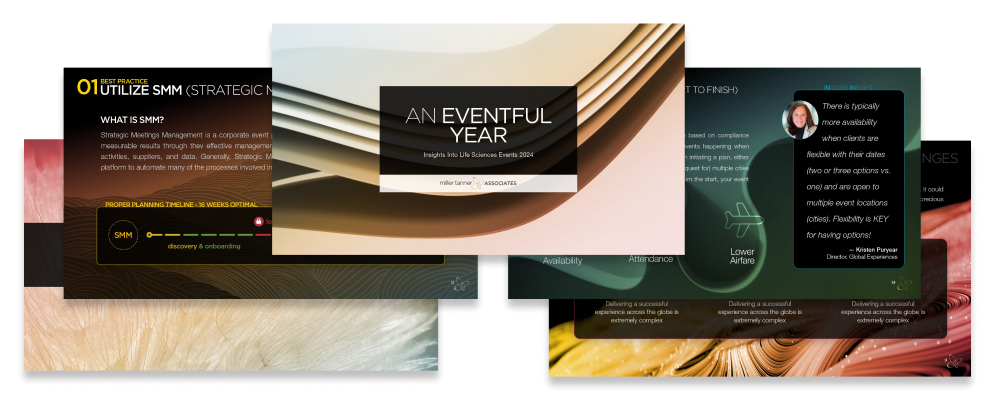
for life sciences meetings/events
Tips & insights gathered over 27 years.
